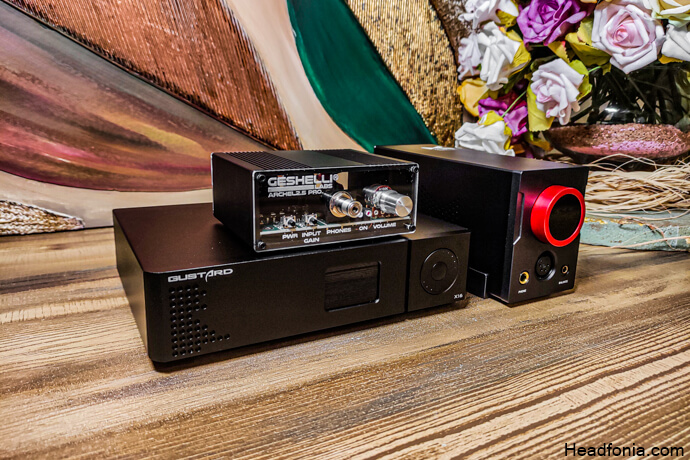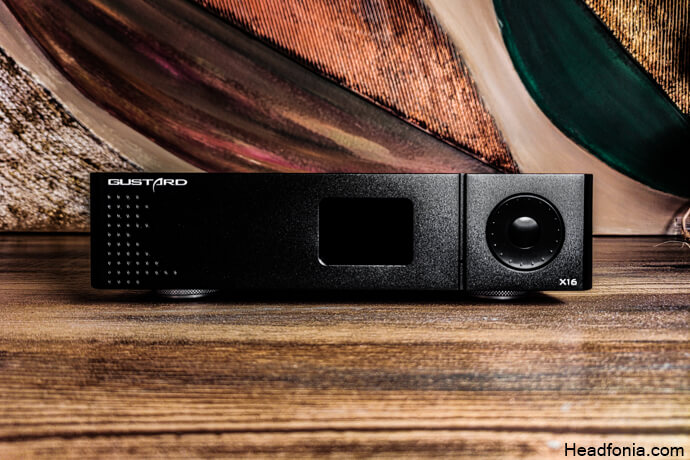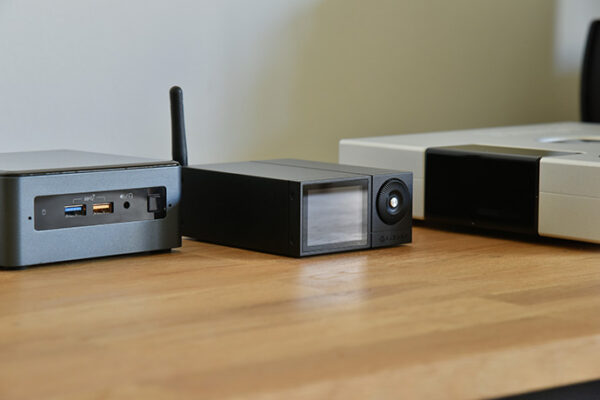DAC Performance
In this section, I will describe the sound signature of the Gustard X16 to you. I will not be using any amp here and I am hooking the DAC directly to my reference monitors via XLR.
The moment I hooked it up, I noticed how clean and flat it sounds. Detail-retrieval impressed me very much, I didn’t have any expectations so this was a very nice surprise. I also noticed that it is quite transparent and presents the recordings as-is. The reproduction is quite flat, with no coloration, no band manipulation. I can’t hear any dips or peaks, it is as accurate as it gets. 9068AS is a new chip and I was curious. I can say that I am happily sated. Let’s go into technicals and get a closer look at the performance.
Low – Mid – High
I am switching to my headphone amplifier here. We’re going to go with my regular test AMP, Geshelli’s Archel 2.5 Pro & SMSL SH-9 (BAL).
The low region is fast and tight. It does not have an incredibly powerful bass response, rather, it is rounded, quick, and agile. For example, while listening to ‘’Get It’’ by Atomic Drum Assembly, the hits are easily trackable and you can hear how good the PRaT really is. Transients are fast and defined. It handles congestion very well during harsh and crowded passages with a lot of instruments on the stage. Many analytical DACs have a common problem that they are often mediocre at reflecting the emotion and soul in the music. However, I believe that Gustard found a sweet spot here. ‘’Mad About You’’ from Hooverphonic (Orchestra Version) is a good test track for this and X16 performed better than the SMSL SU-9 in this regard.
Midrange acts similar to the low region. Absolute clarity, flat response, raw presentation. Gustard X16 will reveal if there is anything bad about the mastering. If you also like detailed, reference DACs like me, but also prefer a tad warmer midrange, I would suggest pairing the X16 with something like LCD-X or HD58X, rather than Hifiman DEVA for example. I paired X16 with the SMSL SH-9 and they made a brilliant couple, however, they’re nitpicking Tidal MQA tracks so beware. Pairing it with Archel 2.5 Pro resulted in a more effortless presentation. If you have a brilliant archive of well-mastered tracks, Gustard X16 will make you incredibly happy. Returning back to the midrange, vocals are presented with plenty of detail. It does not feel dry even though it is very flat. I can’t hear any mid-bass bloat or upper-mid harshness. Tonality-wise everything feels in place, however, note-thickness or weight, whichever you prefer, depends a lot on the equipment you pair it with. The accuracy is the most impressive side of this DAC.
Lastly, treble. I think this DAC has one of the finest treble presentations in the sub $600 tier. It is expansive, clear, defined, articulate, precise, and detailed. That’s a long description but the X16 really deserves it. The soundstage is impressive as well, the highs extend holographically around the stage. The stage is wide and deep with plenty of air between the instruments. Imaging and layering are very impressive as well. Treble feels very airy and not artificial in any way. It stays true to mastering just like the rest of the spectrum. Gustard nailed the tonal balance of the X16.

Pairings
I paired the X16 with the SH-9 and the Archel 2.5 Pro. Both of them are excellent amplifiers. They have quite a few similarities. They both sound transparent, they both have a detailed presentation and clear imaging. Archel’s soundstage is slightly compressed compared to the SH-9. Which has better synergy with the X16 if you ask, well, I would bet on the Archel. The X16 & the SH-9 combo is a little too picky and a little too analytic for my taste. If you pair the X16 with the Archel, the presentation evolves into something more effortless. It is also a tad warmer this contributes to the note-weight of the midrange. Vocals are more vivid with no detail loss. I suggest you try this combo, however, you won’t be able to use your balanced headphone cable with this setup.
vs. SMSL SU-9
The SMSL SU-9 is a very capable DAC and from a price-to-performance aspect, both of them are great devices. There is a small price difference between the two and let’s see how they compare to each other. Firstly, they are both reference-tier DACs with very good performance. The differences that I am going to be describing soon are very minor. The X16 offers a tad better detail-retrieval. It is slightly more resolving compared to the SU-9. It offers a wider and deeper stage as well. PRaT-wise they are quite similar, however, the bass quantity of the SU-9 is bigger than the X16. This may be important for some people, however, do think about the pairing as it is the key factor here. The SU-9 has a better screen and has a smaller, better form factor.
vs. Topping D70S
Topping D70S is an incredible DAC. The difference between them is small, however, it is not small enough to neglect completely. Let’s start with the presentation differences. Firstly, the D70s has a thicker note weight, therefore, it has more emotional, more natural tonality compared to the X16. Its treble is slightly tamed compared to the X16 as well. They both are equally resolving, though, D70s not as nitpicky as the X16. PRaT-wise the Topping D70s is good but the X16 is slightly faster, better. Overall, the D70s feel slightly more natural and effortless. The sharper transients of the X16 make it a perfect companion if you have an already warm-ish headphone in your collection. If you are looking for a DAC for your Sennheiser HD800, I’d suggest getting the D70s instead. Both are very capable DACs with similar features. You can’t go wrong with either.
Last Words
The Gustard’s X16 is a brilliant DAC. It has wide-range of I/O options, it is built to last with good components, it has an over-engineered, neatly and tightly packed inner design with some of the best measurements that I’ve seen, it has Bluetooth and LDAC support and finally, it may be the most revealing, detail-oriented DAC under $600 price bracket.
The soundstage is impressive as well as the imaging and the PRaT is really good as well. I can’t find anything bad about the device, especially at this price.
________
Page 1: Intro & Specifications
Page 2: Build & Technology Inside









